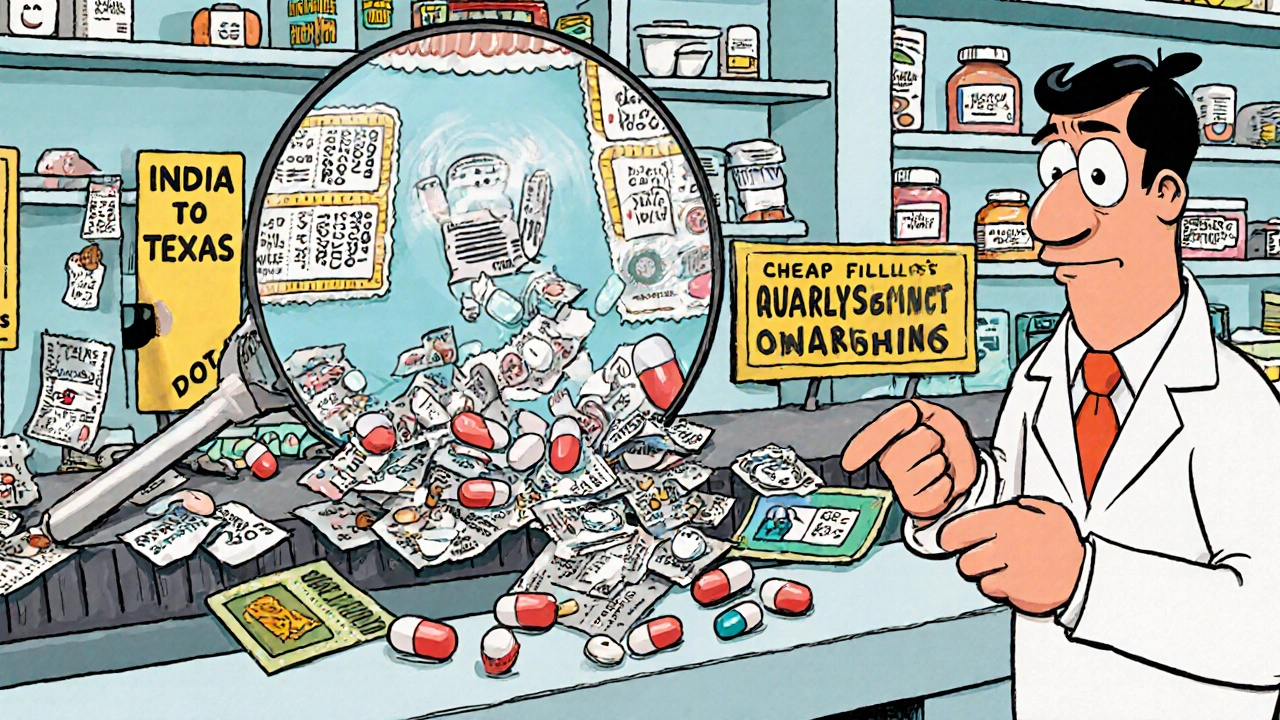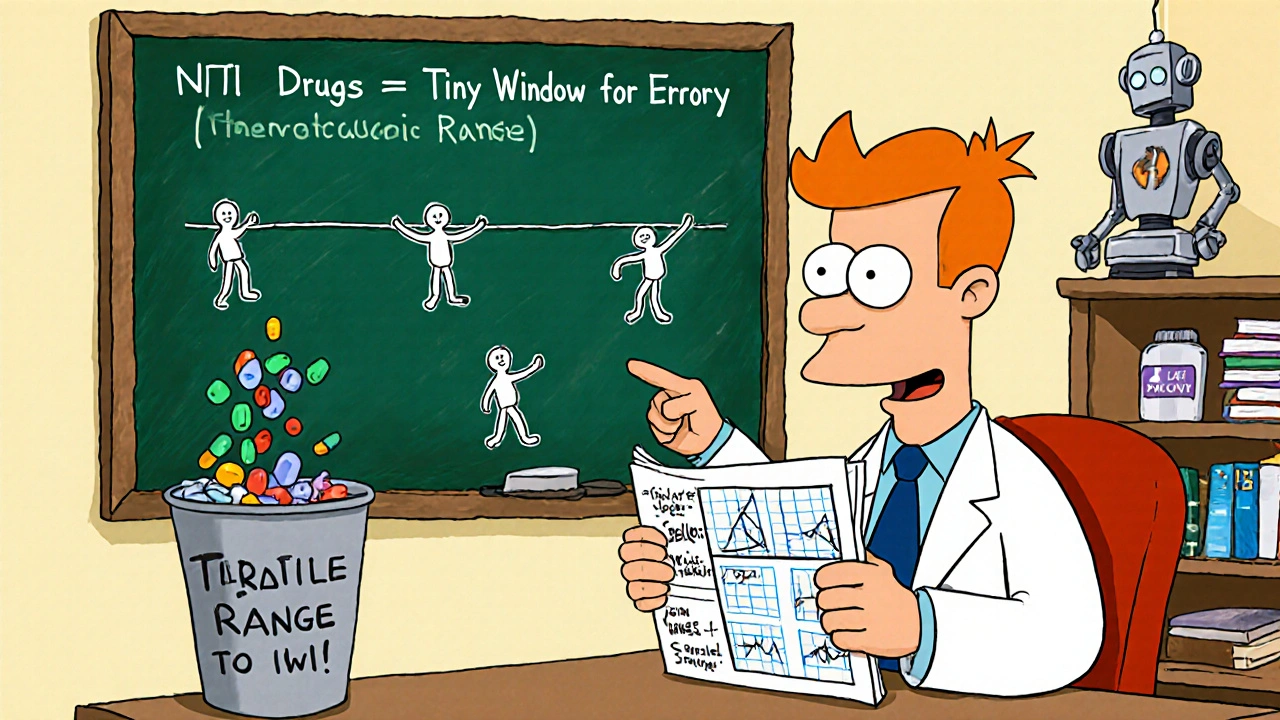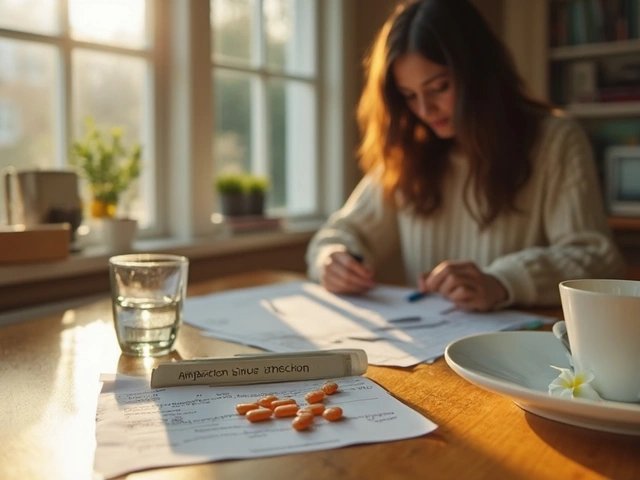
When your doctor prescribes a generic drug, you expect it to work just like the brand-name version. After all, the FDA says it’s the same. But what if it doesn’t? What if the pill you take every day is silently failing you-leaving your blood pressure uncontrolled, your seizures unchained, or your cancer growing unchecked? This isn’t rare. It’s happening more often than most people realize, and the consequences can be deadly.
Why a Generic Might Not Work
Generic drugs are required to have the same active ingredient as the brand-name version. That part is true. But here’s what’s not always said: they don’t have to be identical in how they behave inside your body. The FDA allows generics to vary in absorption by up to 20% less or 25% more than the original. That’s a 45% total range. For most drugs, that’s fine. For others, it’s dangerous.Take warfarin, a blood thinner. A patient needs to maintain a very narrow range of drug levels in their blood. Too little, and they risk a stroke. Too much, and they could bleed out internally. A generic version that absorbs 15% slower might mean the patient’s INR drops dangerously low. Another that absorbs 20% faster could send them to the ER with internal bleeding. These aren’t hypotheticals. Doctors report cases where patients stabilized on a brand-name drug relapsed after switching to a generic-and improved again when switched back.
This problem is worst with narrow therapeutic index (NTI) drugs. These include:
- Phenytoin (for seizures)
- Digoxin (for heart failure)
- Tacrolimus (for organ transplant patients)
- Methotrexate (for cancer and autoimmune diseases)
- Levothyroxine (for thyroid disorders)
For these, even a 5% difference in absorption can change outcomes. The FDA has special rules for NTI drugs-requiring a tighter bioequivalence range of 90-111%-but enforcement isn’t always consistent. And not all generics are tested under these stricter standards.
The Hidden Flaws in Manufacturing
The problem isn’t just the active ingredient. It’s what’s around it.Every pill has inactive ingredients: fillers, binders, coatings, and stabilizers. These don’t treat your condition, but they control how the drug dissolves, how fast it’s absorbed, and whether it even reaches your bloodstream. A small change in one of these can turn a life-saving drug into a useless one.
In 2013, the FDA pulled Budeprion XL, a generic version of Wellbutrin, after hundreds of patients reported severe side effects-panic attacks, dizziness, and loss of seizure control. The issue? The generic used a different coating that caused the drug to release too quickly. The brand-name version released slowly over 12 hours. The generic released it all in under 2 hours. Patients weren’t getting the steady dose they needed.
Similar problems have been found with generic Concerta for ADHD. Some versions dissolved too fast, leading to spikes in blood levels and increased side effects. Others dissolved too slowly, leaving patients unfocused all day.
Even worse, quality control varies wildly between manufacturers. Investigators found pills from the same blister pack containing anywhere from 72% to 103% of the labeled dose. One patient with multiple sclerosis had relapses after switching to a generic that contained just 72.5% of the required active ingredient. Another patient, after a heart transplant, wondered if her generic tacrolimus was being absorbed too quickly-risking organ rejection.

When the Drug Breaks Down
Drugs don’t just sit on a shelf. They degrade. Heat, humidity, light, and time can break down the active ingredient. That’s why manufacturers run stability tests-sometimes for months-to prove their product stays potent until the expiration date.But not all companies do this well. In 2025, researchers found that over 30% of failed generic drugs had too little active ingredient-some as low as 88%. Others had too much-over 112%. That’s not a typo. Some pills contained more than 10% extra drug. For a drug like methotrexate, that’s enough to cause severe toxicity. Patients reported vomiting, mouth sores, and bone marrow suppression after taking what they thought was a standard dose.
Chemical breakdown is silent. A patient might take the same generic for months, then suddenly have a reaction. Why? Because the drug in that bottle has been sitting in a hot warehouse, in a humid climate, or on a shelf in a pharmacy with no climate control. Esters, common in many drugs, break down in moisture. Light-sensitive compounds degrade under fluorescent lighting. These aren’t manufacturing errors-they’re failures in storage and distribution.
Who’s Responsible?
The system is broken, and no single party is to blame-but everyone plays a part.Pharmaceutical companies, especially those in countries with weak oversight, cut corners to save money. One manufacturer might use cheaper fillers. Another might skip stability testing. A third might repurpose old equipment that doesn’t mix ingredients evenly.
Then there are Pharmacy Benefit Managers (PBMs). These middlemen negotiate drug prices for insurers. They push for the cheapest generic-even if it’s from a factory with a history of violations. They profit from the gap between what the pharmacy pays and what the insurer reimburses. The cheaper the drug, the bigger the cut. Patient safety? Not a priority.
And the FDA? It approves generics based on bioequivalence studies that test only 24-36 patients. That’s not enough to catch variability in real-world use. The agency inspects only a fraction of global manufacturing sites. In 2023, over 30% of deficiencies in generic drug applications came from manufacturing issues-not science, not chemistry, but sloppy production.

What Patients and Doctors Can Do
If you’re on a critical medication-especially an NTI drug-don’t assume all generics are equal.Ask your doctor: Is this a drug where even small changes matter? If yes, ask for the brand name or a specific generic manufacturer you’ve had success with before.
Track your symptoms: Did your condition change after switching generics? Did you develop new side effects? Keep a log. Bring it to your next appointment.
Check the pill: If your generic looks different than the last one you got, ask the pharmacist why. Note the name of the manufacturer on the bottle. If you’ve had good results with one brand, stick with it.
Report problems: If you suspect a generic isn’t working, report it to the FDA’s MedWatch program. These reports help the agency identify patterns. In 2013, hundreds of patient reports led to the withdrawal of Budeprion XL.
Pharmacists can also help. Some pharmacies allow you to request a specific generic manufacturer. Don’t be afraid to ask. Your health is worth the extra step.
The Bigger Picture
This isn’t just about pills. It’s about trust in the system. We’re told generics save money. And they do-when they work. But when they don’t, the cost isn’t just financial. It’s measured in hospital visits, lost time, missed work, and sometimes, lives.Global supply chains make this harder to fix. A generic made in India might be shipped to a warehouse in Texas, then sent to a pharmacy in Ohio, then dispensed to a patient in rural Maine. Each step adds risk. Temperature control? Inconsistent. Packaging? Poor. Tracking? Nonexistent.
There are solutions: stricter bioequivalence standards for NTI drugs, mandatory batch testing before distribution, better tracking of generic manufacturers, and transparency about where drugs come from. But without pressure from patients and doctors, change won’t come.
For now, the safest thing you can do is stay informed. Don’t accept silence as an answer. If your medication isn’t working, it’s not just in your head. It might be in the pill.
Can generic drugs really be less effective than brand-name drugs?
Yes, in some cases. While most generics work just as well, differences in inactive ingredients, manufacturing quality, and drug absorption can cause therapeutic failure-especially with narrow therapeutic index drugs like warfarin, phenytoin, or tacrolimus. The FDA allows up to a 25% variation in absorption, which can be dangerous for drugs where the dose is close to the toxic level.
Which generic drugs are most likely to fail?
Drugs with a narrow therapeutic index (NTI) are most at risk. These include anticoagulants (warfarin), anti-seizure medications (phenytoin), heart drugs (digoxin), immunosuppressants (tacrolimus, cyclosporine), thyroid hormones (levothyroxine), and chemotherapy agents (methotrexate). Even small changes in how these drugs are absorbed can lead to treatment failure or severe side effects.
How can I tell if my generic drug isn’t working?
Watch for changes after switching generics: worsening symptoms, new side effects, or loss of control over your condition. For example, if your seizures return, your blood pressure spikes, or your INR levels fluctuate without reason, the generic might be the cause. Keep a symptom log and compare it to when you were on the brand-name version or a different generic.
Should I always ask for the brand-name drug?
Not always-but if you’re on a high-risk medication, it’s worth asking. Many patients stabilize on a specific brand or generic and do worse after switching. If your doctor agrees it’s necessary, they can write “Dispense as Written” or “Do Not Substitute” on the prescription. Insurance may require prior authorization, but your health comes first.
Are generic drugs from certain countries more likely to be unsafe?
There’s no official list, but many quality issues trace back to manufacturers in countries with weaker regulatory oversight. The FDA inspects only a small percentage of overseas facilities. Reports of under-dosed or contaminated generics have come from India, China, and other regions where enforcement is inconsistent. The key is to know your manufacturer and report any unusual changes in how the drug affects you.
What should I do if I think my generic drug is causing problems?
Don’t stop taking it without talking to your doctor. Instead, document your symptoms, note the manufacturer name on the bottle, and contact your pharmacist. Ask if you can switch back to a previous version or request the brand-name drug. Report your experience to the FDA’s MedWatch program. Your report could help prevent others from having the same problem.




Cynthia Springer
November 26, 2025I switched my levothyroxine generic last month and my fatigue got worse. Like, "can't-get-out-of-bed" worse. I didn't think it was the pill until I checked the manufacturer-it was different from the one I'd been on for years. Back to the old one, and boom, energy back. Why does no one talk about this?
Aaron Whong
November 27, 2025The epistemological rupture in pharmaceutical governance is staggering. We operate under a positivist illusion that bioequivalence equates to therapeutic equivalence, yet the phenomenological experience of the patient-embodied, temporal, and contingent-is systematically erased from regulatory calculus. The FDA's 20% absorption window is not a scientific standard; it's a neoliberal compromise masquerading as public health policy.
Rachel Whip
November 28, 2025As a pharmacist for 18 years, I’ve seen this firsthand. Patients on tacrolimus after transplants? One tiny switch from one generic to another and their levels spike or crash. We keep logs of manufacturers and try to stick with the same one. If a patient says they ‘feel off’ after a refill change, we don’t dismiss it. We check the bottle. Always.
It’s not about being anti-generic. It’s about being pro-safety.
Micaela Yarman
November 28, 2025As a citizen of the United States of America, I feel compelled to state with the utmost formality that the integrity of our pharmaceutical supply chain is a matter of national security. The commodification of life-saving medication, driven by profit-maximizing entities with negligible accountability, constitutes a systemic failure of civic duty. We must demand transparency. We must demand traceability. We must demand accountability.
mohit passi
November 29, 2025bro in india we make 70% of the world's generics 😎 but yeah some factories cut corners cause they gotta survive too 🤷♂️ not all bad but yeah when your blood thinner acts up? yeah that's real. tell your doc. report it. we gotta fix this 🙏
Brittany Medley
December 1, 2025Just to be clear: I’m not saying all generics are bad. I’m saying: if you’re on a drug where the margin between ‘working’ and ‘dead’ is thinner than a sheet of paper, then you should treat the manufacturer like a lottery ticket. Write down the name. Don’t let them switch it without telling you. And if your INR jumps for no reason? It’s probably not your diet.
Marissa Coratti
December 3, 2025It is imperative that we, as a society, recognize the profound and often underappreciated implications of pharmaceutical bioequivalence standards as they relate to individual physiological variance, pharmacokinetic heterogeneity, and the ethical obligations of regulatory bodies to prioritize patient outcomes over cost-efficiency metrics. The current paradigm, which permits up to a 45% variability in absorption profiles for critical medications, represents not merely a regulatory loophole, but a moral failing of unprecedented scale in modern medicine.
Ezequiel adrian
December 4, 2025USA thinks they own the world but their drugs are made in china and india and shit breaks down in the heat and nobody cares. My cousin died because his generic seizure med turned to dust in his pillbox. And now they want to sell you more cheap pills? Fuck that. This system is rigged.
Ali Miller
December 5, 2025THIS IS WHY AMERICA IS LOSING. We outsource our medicine to third-world countries because we’re too lazy to make our own. The FDA is a joke. The PBMs are crooks. And now you’re telling me my heart medication might be 12% underdosed? I’d rather pay $500 for a brand-name pill than die because some guy in Bangalore used a broken mixer. America: wake up.
JAY OKE
December 5, 2025My dad’s on digoxin. Switched generics last year. Started getting dizzy, heart skipping. We switched back to the old one-same doctor, same dose-just different maker. He’s fine now. Never assumed they were all the same. Always check the label. It’s not that hard.
Joe bailey
December 6, 2025Hey, just wanted to say this is such an important topic. I’ve had a friend on methotrexate who had to go to A&E after a generic switch. She’s okay now, but it was terrifying. I’ve started asking my pharmacist to stick with the same batch every time. It’s a tiny thing, but it matters. Keep sharing stories like this. We need more awareness 💪
Amanda Wong
December 6, 2025Everyone’s panicking over generics. Let me be the first to say: most people don’t even notice a difference. This is just fearmongering wrapped in medical jargon. If your condition is unstable, maybe it’s not the pill-it’s you. Stop blaming Big Pharma for your own noncompliance.
Stephen Adeyanju
December 8, 2025My wife's on warfarin. Switched to a generic. She almost bled out. Now we only get the brand. Insurance tried to force us back. We fought them. We won. You think your insurance cares if you die? They don't. Your life is a line item. Don't let them gamble with it